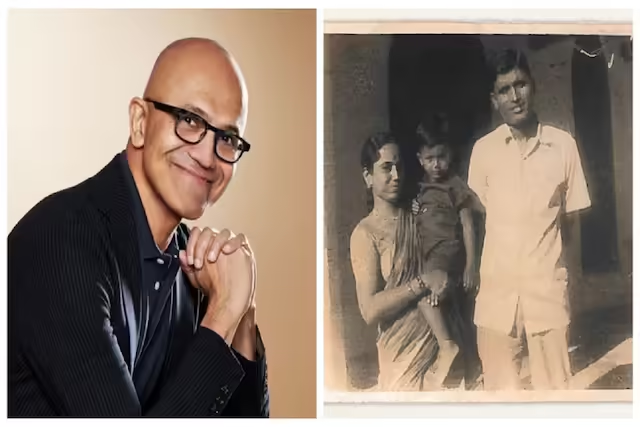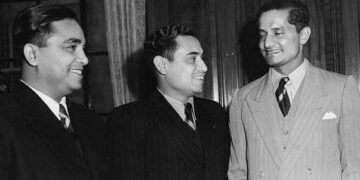Sahitya News Desk!!! Kuppali Venkatappa Puttappa (English: Kuppali Venkatappa Puttappa, born- 29 December, 1904, Shivamogga, Karnataka; died- 11 November, 1994, Mysore) was a Kannada language poet and writer. He is given the title of the greatest Kannada poet of the 20th century. Kuppali Venkatappa Puttappa was the first among the seven persons to receive the Jnanpith honor in Kannada language. Kuppali Venkatappa Puttappa did all his literary works under the pseudonym ‘Kuvempu’. Kuppali Venkatappa Puttappa was also awarded ‘Padma Bhushan’ in the year 1958 in the field of literature and education.
Introduction
Kuppali Venkatappa Puttappa alias ‘Kvempu’ was born on 29 December 1904 in a Kannada family in a village called Kuppali in Shivamogga district in Karnataka. His father’s name was ‘Venkatappa Goud’ and mother’s name was ‘Seethamma’. When he was 12 years old, his father died. He married a girl named ‘Hemvati’ on April 30, 1937 and entered into marital life. He was the father of two sons and two daughters.
Kuppali Venkatappa Puttappa completed his primary education at home, and then completed his secondary education from a high school in Mysore. He completed his graduation from Maharaja’s College, Mysore in 1929 and soon after he started his professional career by working as a professor in Maharaja’s College. He later worked as an assistant professor at Kendriya Vidyalaya, Bangalore in 1936 and again returned to Maharaja’s College in 1946. In 1956 he was elected as the Vice-Chancellor of Mysore University, where he served until his retirement in 1960.
literary work
Kuppali Venkatappa Puttappa began his literary work in English, with a collection of poems being the initial idea, but later his work, writings were primarily in the Kannada language. He led the movement to make Kannada the medium of instruction, emphasizing the theme of ‘education in the mother tongue’. To meet the needs of Kannada research, he founded the ‘Kannada Study Institute’ in the University of Mysore.[2] Established, which was later renamed as ‘Kuvempu Institute of Kannada Studies’. As Vice-Chancellor of Mysore University he pioneered the study of sciences and languages. He said ‘G. Challenged the publication of knowledge for those who worked with ‘Hanumantha Rao’. Kuppali Venkatappa Puttappa was against casteism, meaningless practices and religious rituals. ‘The Shudra Tapaswi'[3] As such, his dissatisfaction against these practices can be seen in his writings. He was given the prestigious ‘Jnanpith Award’ for his epic poem ‘Shri Ramayana Darshanam’.
poetic works
Amalan Kathe (Infant Literature) (1924) Bommanahalliy Kindarijogi (Infant Literature) (1926) Haluru (1926) Kolulu (1930) Panchajanya (1933) Kalasundari (1934) Navilu (1934) Chitrangada (1936) (Khandakavya) Kathan Kavanagalu (1936) Kogile Mattu Soviet Rashya (1944) Krittike (1946) Agnihansa (1946) Pakshikaashi (1946) Kinkini (1946) Premkashmir (1946) Shodashi (1947) Nanna Mane (1947) Jenaguva (1952) Chandramanchke Ba, Chakori! (1954) Ikshu Gangotri (1957) Aniketan (1963) Anuttara (1963) Mantrakshate (1966) Kadardke (1967) Pretkyu (1967) Kutichak (1967) Honne Hottare (1976) Samudralanghan (1981) Konay Tene Mattu Vishwamanav Geete (1981) Marivigyan (1947) (Infant Literature) Meghpur (1947) (Infant Literature) Sri Ramayana Darshanam (1949)
Drama
Modannan Tamma (1926) (Makkal drama) Jalgaar (1928) Yaman Solu (1928) Nanna Gopal (1930) (Makkal drama) Birugaali (1930) Smashana Kurukshetra (1931) Maharatri (1931) Valmiki Bhagya (1931) Raktakshi (1932) Shudra Tapasvi (1944) Beralge Koral (1947) Baidaan (1948) Chandrahas (1963) Kanin (1974)
Novel
Kanuru Subbamm Heggadati (1936) Malegalalli Madumagallu (1967)
story collection
Sanyasi Mattu Itare Kathegalu (1936) Nanna Devaru Mattu Itare Kathegalu (1940)
Prose, Thought and Management
Atmashrigaagi Nirankushmatigalagi (1944) Sahitya Prachar (1944) Kavya Vihar (1947) Taponandan (1950) Vibhuti Puje (1953) Draupadiy Shrimudi 1960) Rasovaisah (1962) Shashthi Naman (1964) etc. (1970) Manujamat-Vishwapath (1971) Vichar Krantige Awahan (1974) Jantapragye Mattu Ideological Awakening (1978)
autobiography
Nenpin Doniyalli
life character
Sri Ramakrishna Paramahamsa (1934) Swami Vivekananda (1934)
Ramakrishna-Vivekananda literature
Vivekvani (1933) Guruvinodane Devardige (1954)
Vedanta literature
Rishivaani (1934) Vedanta (1934) Mantra Mangalya (1966)
Other
Janpriya Valmiki Ramayan (1950) Prasarang (1959)
Commendation and Award
Google Doodle released on Kuppali Venkatappa Putappa Kendra Sahitya Academy Award – (Sri Ramayana Darshanam) (1955) Padma Bhushan (1958) University of Mysore Dind Gaurav D.Litt. ‘Rashtrakavi’ Award (1964) Karnataka University Dind Gaurav D.Litt. (1966) Jnanpith Prashasti (Shri Ramayana Darshanam) (1968) Bangalore University Dind Gaurav D.Litt. (1969) Padma Vibhushan (1989) Karnataka Ratna (1992) Pump Prashasti(1988)
Google Doodle
Kuppali Venkatappa Putappa is counted among the great writers and poets of Kannada language. He was the first among the seven persons to receive the Kannada Jnanpith Award. He was awarded ‘Padma Bhushan’ in the field of literature and education. He was awarded the ‘Sahitya Akademi Award’ in 1955 for ‘Sri Ramayana Darshanam’, an epic poem written by him. He is known by the nickname ‘Kuvempu’ in the literary field. Google remembered this great litterateur by making a wonderful doodle on his 113th birthday. In this doodle, Google has shown that Kuppali Venkatappa Puttappa is writing literature sitting on a big stone, with beautiful nature depicted behind him. Along with it, Google’s white colored Google logo in Kannada language style is also shown.
film production
If we talk about films based on the works of Kuppali Venkatappa Puttappa, Girish Karnad had made a film on him in Kannada. Girish Karnad made the film ‘Kanaru Heggadithi’ in 1999, which was based on Kuvempu’s novel ‘Kanaru Subamma Heggadithi’. The story of the film was about a family before independence. This film also won the National Film Award for Best Feature Film in Kannada in 2000. The interesting thing was that after the release of the film, people’s interest in this novel increased and 2000 more copies were printed.






